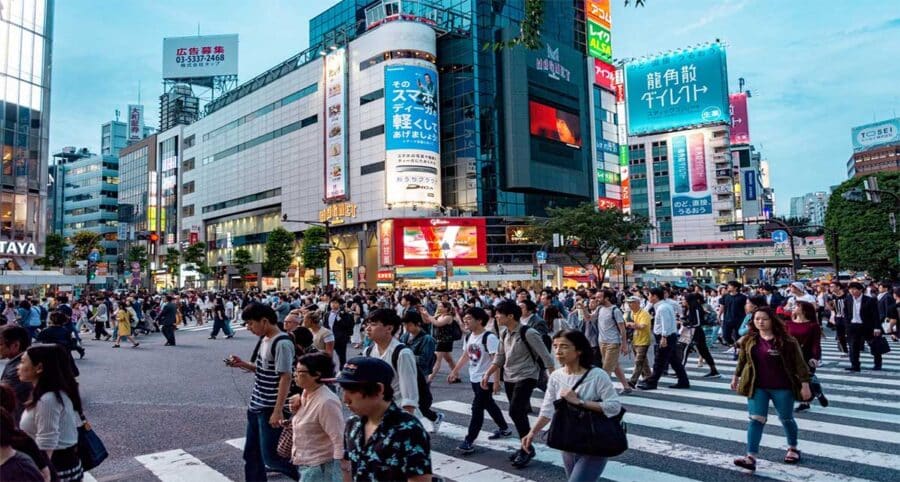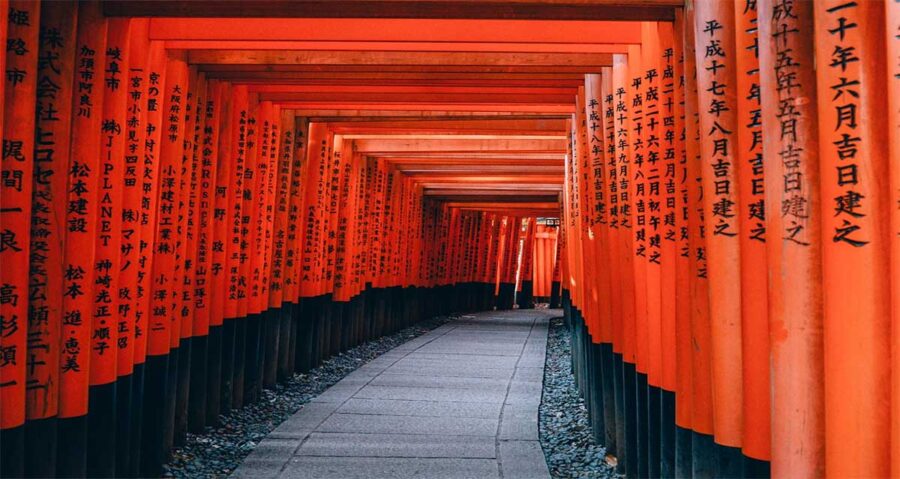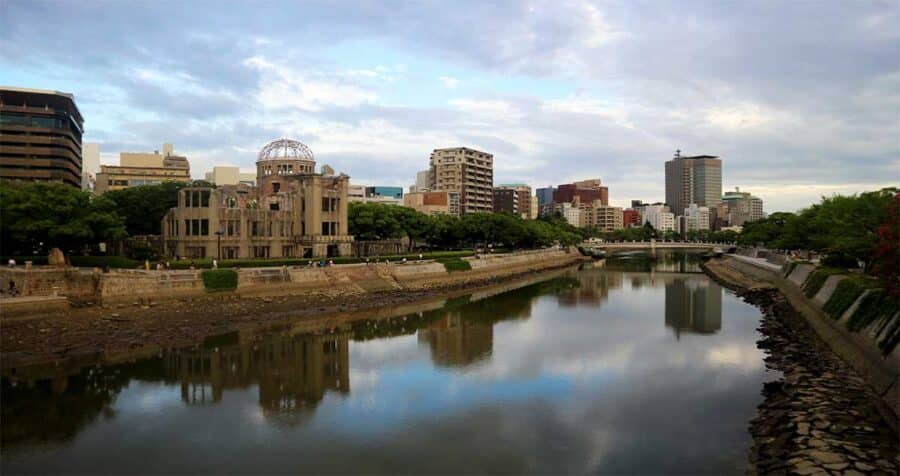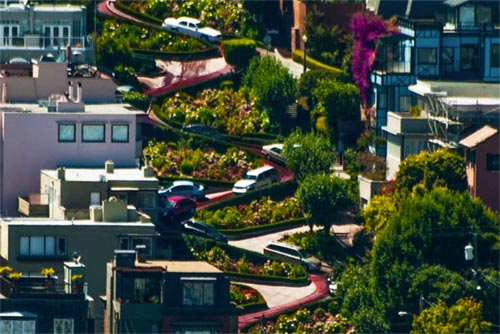A Guide for International Travelers to Japan
Japan has a unique reputation when it comes to public image. While they lead innovation in some frontiers, they also resist change in other aspects. For example, they might appear in headlines with advances in robotics and new tech products, yet you’d be surprised that most businesses still run on fax machines. It’s quite a paradox, but this dynamic has allowed Japan to grow with the world while maintaining its core identity.
This might be the reason why the country has become a mandatory destination for international travelers in general. Today, we’ll be going over helpful information to keep in mind when visiting the land of the rising sun.

Practical Tips for a Smooth Experience
Though Japan is reasonably tourist-friendly, it still comes with particular nuances that can take new visitors by surprise. High-traffic areas like Tokyo and Yokohama usually cater to foreigners, but language barriers will be unavoidable when interacting with the local populace.
You will want a reliable Japan eSIM to use travel and translation apps for this. Below are more practical tips to ensure your visit goes without a hitch.
Using Public Transportation
Public transportation is the best way to observe a country’s culture and traverse the area. In Japan, citizens have a particular approach when sharing a train or bus.
The most significant “rule” would be to avoid talking or making loud noises after boarding. One might think it’s an unspoken rule, but you’ll even hear reminders on the intercom to not talk on your phone and disturb other passengers. You won’t get kicked out, but avoiding drawing attention to yourself as a “gaijin”/foreigner is always good.
Other than that, the best practice would be to “do as the Romans do.” You’ll pick up on a few things, like how they exit and board vehicles or passenger etiquette, but you can learn it after a day.
Cash vs Card payments
Any seasoned traveler will know to have physical and digital currency available in another country. And Japan is no different. Yes, you will find stores accepting Amex or Visa, but some local establishments are more likely to accept cash.
One thing you might notice is vending machines that sell tickets for menu items. This is most common for ramen shops or small food stalls in the street, usually cash only.
Another mode of payment you’ll encounter is IC cards; transportation cards you can use to board public vehicles and pay for products in participating stores. A combination of cash, credit, and an IC card is ideal for a seamless experience when exploring Japan.
Waste Disposal and Recycling
What surprises most newcomers is the scarcity of public trash receptacles. Most people make the novice mistake of purchasing food items to go, only to realize that they need somewhere to dispose of the containers/wrappers.
Depending on the waste you have, some options are available. For bottles and cans, you can usually find bins near vending machines. Your best bet for everything else would be a bathroom, convenience store, or food court.
Other than that, it would be wise to eat certain foods near the stall so the staff can take your trash or wait until you get back to your hotel.
Exploring Japan’s Top Destinations
Tokyo
You could spend a whole week in Tokyo without running out of places to visit. To be clear, it is a prefecture with multiple cities, not a singular place itself. And while it would be improbable to explore every nook and cranny, there are certain places you can visit to get an overall experience.
Must Visit Attractions
The first stop should be Tokyo Station. This scenic destination is the perfect photo op for your album and serves as a springboard to the surrounding areas.
The station is chock-full of shops and restaurants; you could spend a whole day exploring. It has a collection of ramen shops on the bottom floors and specialty shops for anyone looking for souvenirs.
Next is Shibuya City. The crosswalk in front of the train station is arguably the most popular backdrop for media references to Tokyo. The “Hachiko” dog statue is conveniently in the vicinity as well.
The third is Shinjuku. A digital billboard outside the east exit train station is equivalent to NYC’s Times Square. Recently, it went viral for featuring 3D cats that appear to pop out of the screen, among other clever advertisements.
Around the area, you’ll also find the TOHO cinema featuring Godzilla peering from the rooftop. Korea town is just within walking distance as well if that’s your scene.
Lastly, there’s Tokyo SkyTree, Akihabara station, Ueno, and Odaiba for our honorable mentions. There must be a correct list of destinations, as people have different reasons for visiting. If you’re limited on time, the first three should be enough to say you’ve seen the area.
Transportation in the City
Getting around in Tokyo isn’t as intimidating as you’d think; it’s easy with travel apps like Google Maps. Trains are often the best mode of transportation when exploring the city, and you’ll want an IC card when doing so.
As stated before, using an IC card is more convenient than physically purchasing a ticket to pass the turnstiles. It will save you a lot of time instead of falling in line for the machines and make for a memorable souvenir.
Just be aware of train delays that could leave you stuck on the tracks for more than an hour if you’re unfortunate. The reason for delays is mostly from weather conditions or sometimes human accidents, so timing your visit for calmer seasons would be wise.
Dining and Nightlife
Japan’s cuisine scene is to be noticed; it can be just as much a reason for visiting as the surrounding attractions themselves. But just as public commuting has a culture of its own, dining is not an exception.
If there were an unspoken principle behind Japan’s menu creation, it would be simplicity, balance, and presentation. Be prepared for items proportionately smaller than their western counterparts and seasoned for the typical palate.
Keeping that in mind, these few insights will be helpful to keep in mind when looking for your next meal:
- Always Carry Cash: Most local establishments (especially ramen shops) utilize vending machines to sell item tickets or not accept cards.
- Ask for an “Eigo no menu” (English Menu): shops based around international hotspots will often have these menus available for visitors. If not available, make sure you have a good translation app on hand.
- There is No Tipping: travelers might be pleasantly surprised to find that the food is not only decently priced, but tips are also not commonly accepted.
- Customization is only sometimes entertained; what you see is what you get. Unless it is something pressing like a food allergy, modifying a menu item might not be an option.
- Condiments are Controlled and Limited: McDonalds will only give you BBQ sauce with an order of chicken nuggets, and every restaurant will have different condiments available, if any.
- High-Traffic Shops Expect You to Eat and Leave: Some stalls have very limited seats, so you can finish your meal in a reasonable time and not delay the next customer by being on your phone.
While everyday dining might seem restrictive, the nightlife might offer some more laxness. Izakayas (stay-and-drink-place) are always a safe bet to enjoy a few drinks and munch on appetizers. It’s like Japan’s take on a pub, with the patrons being more sociable and loose compared to their daytime personas.
These are the drinks commonly offered in bars and clubs:
- Sake (this rice wine is heavily iconic as a Japanese liquor)
- Sours (a mixture of seltzer, sour fruit juice, and clear liquor; this is a friendly drink to sip while conversing)
- Beer (the local brews hold up against international rivals, is usually served with a bit of foam to “preserve freshness and flavor against exposure to air.”
- Umeshu (these fruit wines are pretty popular with women and usually have a sweeter taste than their counterparts)
- Shōchū (almost like a stronger sake, this clear liquor boasts a range of 35-45% ABV and has a strong taste)
The most common places to enjoy the night scene are Shibuya, Shinjuku, and Roppongi, each with its collection of bars and clubs. You can often find small pockets of pubs hidden in alleyways like Shinjuku’s “Golden Gai” that make for the perfect bar crawls.
Have your night somewhat planned out though; train services stop a little past midnight, leaving you with limited options for returning to your lodgings.
Kyoto
Once the capital of Japan, this prefecture is famous for preserving Japanese tradition, as seen in their gardens, Shinto shrines, and local attractions. You can easily access these beautiful sites by taking the bullet train from Tokyo, which offers a comfortable and convenient journey to experience the region’s cultural heritage.
Historical Landmarks
There are about 30,000 Inari shrines across the country. Still, the Fushimi Inari Taisha branch is the centerpiece they are all affiliated with. People gather here to pray for bountiful harvests, prosperity, and safety for their homes and families.
Often featured in social media, the Fushimi Inari-taisha Shrine is iconic for the densely packed torii gates leading up to the mountainside. You’ll want to bring your best camera for that next highlight in your feed.
Located in Northern Kyoto, the Kinkakuji temple is known as the “Golden Pavilion” for having its upper two floors covered in golden leaves. Tourists can explore the grounds and appreciate the tranquility while learning about the unique history behind its conception.
Suppose you’re looking for that last photo in Kyoto. In that case, the Arashiyama district features a bamboo grove also making rounds on the net. Visitors often describe feeling a sense of “other-worldliness” surrounded by the towering flora.
Once a popular destination for nobles during the Heian Period (794-1185) for its natural setting, Arashiyama also has the Tenryu-jin temple, one of Kyoto’s 14 world heritage sites. The Togetsukyo Bridge will also be nearby with plenty of small shops and restaurants to enjoy.
Traditional Teahouses
Tea houses in Kyoto provide an authentic, serene experience. As you enter, the scent of freshly brewed matcha welcomes you, served gracefully by hosts in traditional clothing. Here, you can enjoy an authentic cup of tea through a traditional ceremony, with some shops offering traditional garbs to enhance the experience.
There are also a few options to enjoy the tea, whether brewed thin (usucha) or thick (koicha). A visit to these tea houses is also inexpensive, ranging between $25–$50 per person.
Experiencing Traditional Arts
Kyoto is a prime location to experience Japan’s oldest traditions. The Minami-za Theater, Kyoto’s oldest Kabuki venue, is an excellent place to start. The dramatic performances provide a window into Japan’s 400-year art form. Be sure to book your tickets in advance to take advantage of them.
Ikebana, the Japanese art of flower arranging, is a hands-on experience that can be therapeutically meditative. The Kyoto Ikebana Center offers workshops to learn and create your ikebana arrangement.
Suppose you want to hone your artistic skills. In that case, taking a Japanese calligraphy class at Calligraphy Kyoto might be a good idea. The classroom is located in the old-fashioned Kyomachiya in the center of Kyoto and offers classes in English and Mandarin. Same-day reservations are also possible.
Osaka
About 4 hours by bullet train from Tokyo, Osaka offers a different flavor from its metropolitan sibling. Boasting a vibrant street culture and modern attractions, this prefecture is jam-packed with activities to last your stay.
Modern Entertainment
Though just neighboring Kyoto, Osaka’s form of entertainment contrasts with Kyoto’s traditional style. One of the more popular venues is Universal Studios Japan (USJ).
Park-goers who choose this branch can visit Super Nintendo World to experience the famous Super Mario game in real life. From racing with karts to exploring the Mushroom Kingdom, this segment is for enthusiasts and casual patrons alike.
For those craving the skyline, the Umeda Sky Building, located in the Umeda district of Kita-ku, is the nineteenth-tallest building in Osaka and one of the city’s most recognizable landmarks. Towering 173 meters and composed of two 40-story towers, the bridge between the two has an observatory platform that offers a 360 panoramic view of Osaka.
Street Food Culture
The Dotonbori area in the south district is the main attraction for a fun night of drinks and street foods. Here, you’ll find the surroundings lined up with bright signs advertising food and many customers deciding what to eat next.
The most common items you’ll find are takoyaki (fried octopus balls), kushikatsu (deep-fried kebabs), yakitori (grilled kebabs), okonomiyaki (savory pancake), and yakisoba (stir-fried noodles) to name a few.
Most of the food is less than $5 and is meant to pair up with a fantastic beer. Again, cash is usually preferred for these types of establishments.
Shopping Opportunities
There are plenty of shopping opportunities in Osaka; you can find almost anything that you can in Tokyo, with the addition of locally limited products. The Tenjinbashisuji shopping street is a solid destination for everyday goods and souvenirs, featuring 2.6km of stores and restaurants.
Venues like the Pokemon Center, Starbucks, and other leading brand franchises also offer goods that can only be found in the area.
Hiroshima
Recovering from WWII, Hiroshima serves as a reminder of the importance of community, hope, and resilience in the aftermath of destruction. Since then it has flourished to become a modern city, widely visited by international tourism.
Peace Memorial Park
Hiroshima Peace Memorial Park is a significant site commemorating a tragic event. It includes the iconic Atomic Bomb Dome, a symbol of remembrance and peace, surrounded by lush greenery and various peace-related monuments. Visitors can reflect on history while promoting a message of hope and anti-nuclear sentiment.
Hiroshima Castle
A reconstructed historic castle in the heart of the city, Hiroshima Castle offers panoramic views from its observation deck and insights into Japan’s feudal history. Inside, visitors can view displays of the reconstruction efforts and Japanese castles in general.
The castle is 10 minutes on foot from the Kamiyacho-nishi tram stop or a 15-minute walk from the Peace Memorial Park. Entrance to the castle grounds is free, but the main keep has a 370 yen entrance fee.
Local Resilience and History
A total of 141,000 deaths occurred after initial blast casualties of around 80,000 residents were reported. With only 80 of the remaining 1000 elected city officials able to spearhead restoration initiatives, the path to repair stretched interminably and hurtfully.
With the aid of foreign volunteers, local backing, and government mediation, the metropolis rose anew as a testament to unbridled yearning for peace.
After reaching pre-war levels of around 410,000 individuals, Hiroshima continued growing into the dynamic city it is nowadays.
CONCLUSION
Without sacrificing its foundational beliefs, Japan has persistently adapted over the years. Grounded by the deep sense of nationwide pride and communal bonds, visitors get a sneak peek at what lies ahead.
On your next trip to Japan, hopefully, our guide will prove helpful.
EXPLORE SOMEWHERE NEW
BUY A PRINT
All photos on this site are available as limited edition fine art photographic prints. Please get in touch for sizes and rates.








